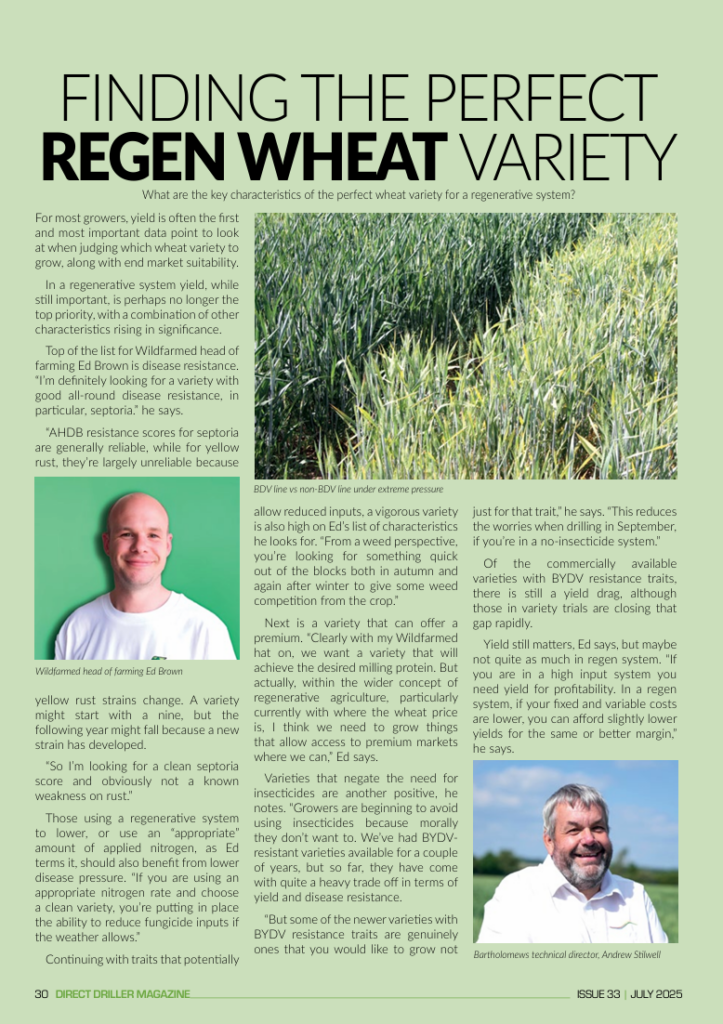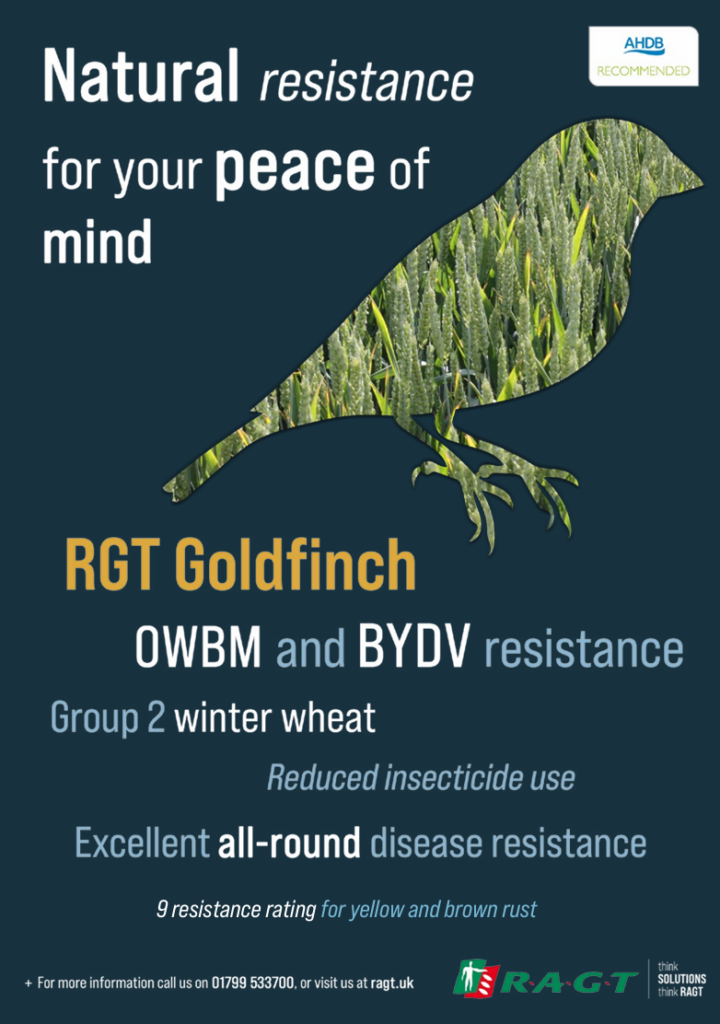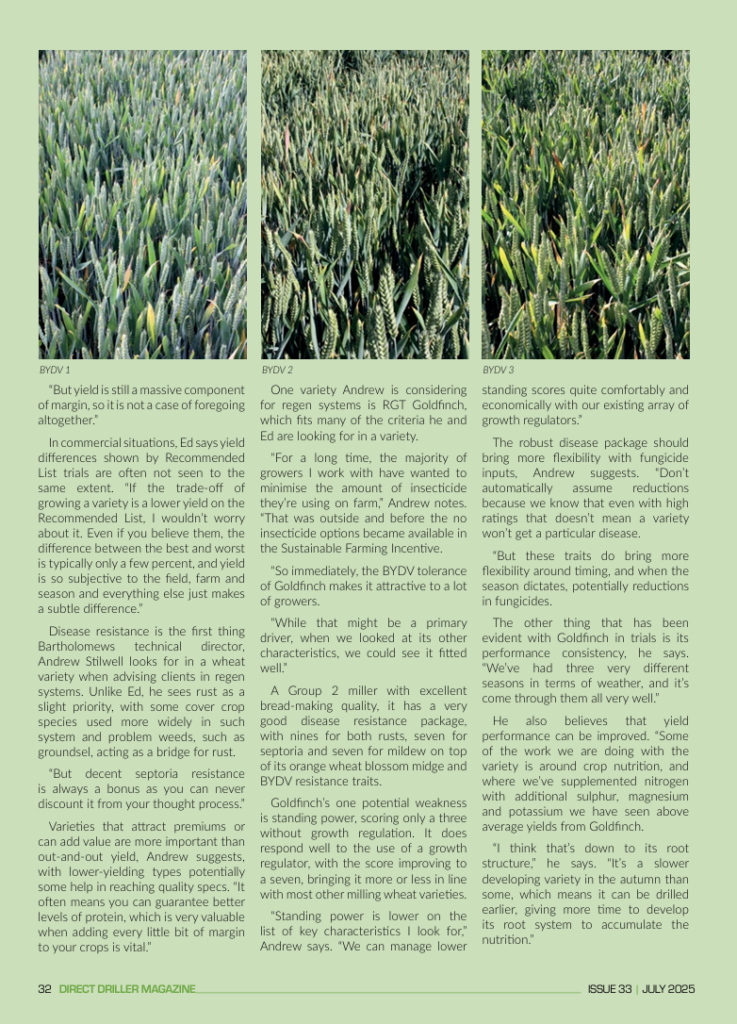What are the key characteristics of the perfect wheat variety for a regenerative system?
For most growers, yield is often the first and most important data point to look at when judging which wheat variety to grow, along with end market suitability.
In a regenerative system yield, while still important, is perhaps no longer the top priority, with a combination of other characteristics rising in significance.
Top of the list for Wildfarmed head of farming Ed Brown is disease resistance. “I’m definitely looking for a variety with good all-round disease resistance, in particular, septoria.” he says.
“AHDB resistance scores for septoria are generally reliable, while for yellow rust, they’re largely unreliable because yellow rust strains change. A variety might start with a nine, but the following year might fall because a new strain has developed.


“So I’m looking for a clean septoria score and obviously not a known weakness on rust.”
Those using a regenerative system to lower, or use an “appropriate” amount of applied nitrogen, as Ed terms it, should also benefit from lower disease pressure. “If you are using an appropriate nitrogen rate and choose a clean variety, you’re putting in place the ability to reduce fungicide inputs if the weather allows.”
Continuing with traits that potentially allow reduced inputs, a vigorous variety is also high on Ed’s list of characteristics he looks for. “From a weed perspective, you’re looking for something quick out of the blocks both in autumn and again after winter to give some weed competition from the crop.”
Next is a variety that can offer a premium. “Clearly with my Wildfarmed hat on, we want a variety that will achieve the desired milling protein. But actually, within the wider concept of regenerative agriculture, particularly currently with where the wheat price is, I think we need to grow things that allow access to premium markets where we can,” Ed says.
Varieties that negate the need for insecticides are another positive, he notes. “Growers are beginning to avoid using insecticides because morally they don’t want to. We’ve had BYDV-resistant varieties available for a couple of years, but so far, they have come with quite a heavy trade off in terms of yield and disease resistance.
“But some of the newer varieties with BYDV resistance traits are genuinely ones that you would like to grow not just for that trait,” he says. “This reduces the worries when drilling in September, if you’re in a no-insecticide system.”
Of the commercially available varieties with BYDV resistance traits, there is still a yield drag, although those in variety trials are closing that gap rapidly.
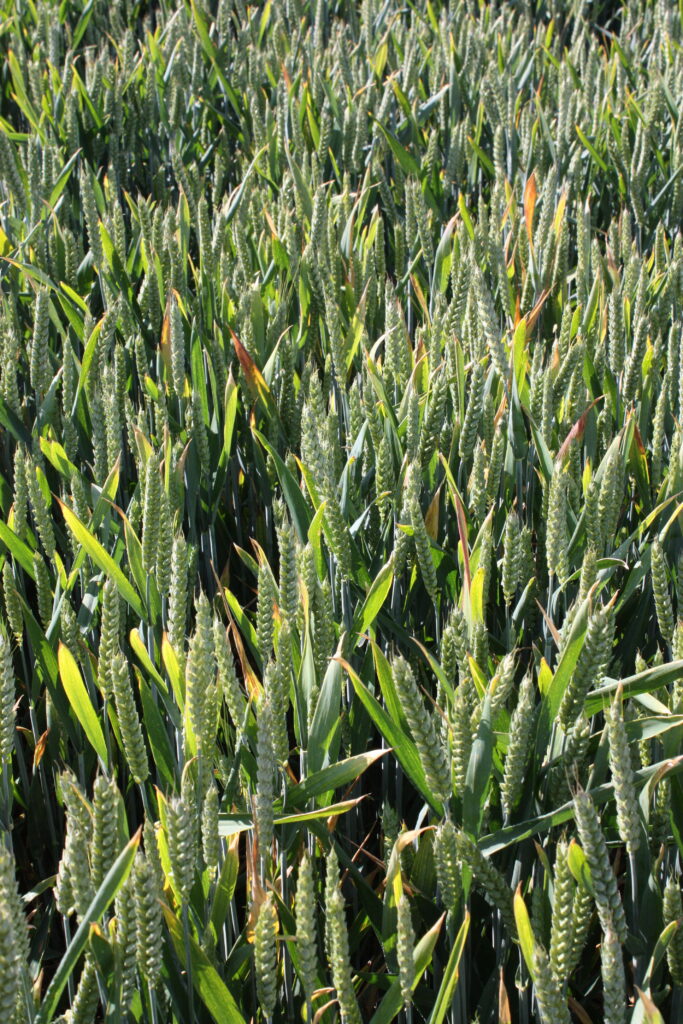
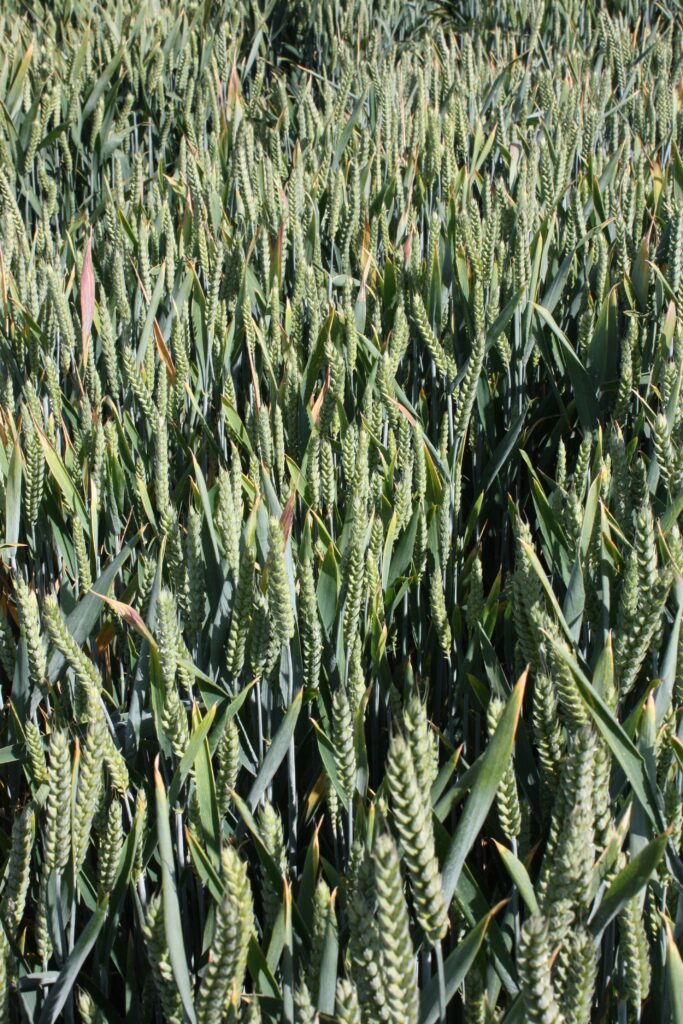
Yield still matters, Ed says, but maybe not quite as much in regen system. “If you are in a high input system you need yield for profitability. In a regen system, if your fixed and variable costs are lower, you can afford slightly lower yields for the same or better margin,” he says.
“But yield is still a massive component of margin, so it is not a case of foregoing altogether.”
In commercial situations, Ed says yield differences shown by Recommended List trials are often not seen to the same extent. “If the trade-off of growing a variety is a lower yield on the Recommended List, I wouldn’t worry about it. Even if you believe them, the difference between the best and worst is typically only a few percent, and yield is so subjective to the field, farm and season and everything else just makes a subtle difference.”
Disease resistance is the first thing Bartholomews technical director, Andrew Stilwell looks for in a wheat variety when advising clients in regen systems. Unlike Ed, he sees rust as a slight priority, with some cover crop species used more widely in such system and problem weeds, such as groundsel, acting as a bridge for rust.
“But decent septoria resistance is always a bonus as you can never discount it from your thought process.”
Varieties that attract premiums or can add value are more important than out-and-out yield, Andrew suggests, with lower-yielding types potentially some help in reaching quality specs. “It often means you can guarantee better levels of protein, which is very valuable when adding every little bit of margin to your crops is vital.”
One variety Andrew is considering for regen systems is RGT Goldfinch, which fits many of the criteria he and Ed are looking for in a variety.
“For a long time, the majority of growers I work with have wanted to minimise the amount of insecticide they’re using on farm,” Andrew notes. “That was outside and before the no insecticide options became available in the Sustainable Farming Incentive.
“So immediately, the BYDV tolerance of Goldfinch makes it attractive to a lot of growers.
“While that might be a primary driver, when we looked at its other characteristics, we could see it fitted well.”
A Group 2 miller with excellent bread-making quality, it has a very good disease resistance package, with nines for both rusts, seven for septoria and seven for mildew on top of its orange wheat blossom midge and BYDV resistance traits.
Goldfinch’s one potential weakness is standing power, scoring only a three without growth regulation. It does respond well to the use of a growth regulator, with the score improving to a seven, bringing it more or less in line with most other milling wheat varieties.
“Standing power is lower on the list of key characteristics I look for,” Andrew says. “We can manage lower standing scores quite comfortably and economically with our existing array of growth regulators.”
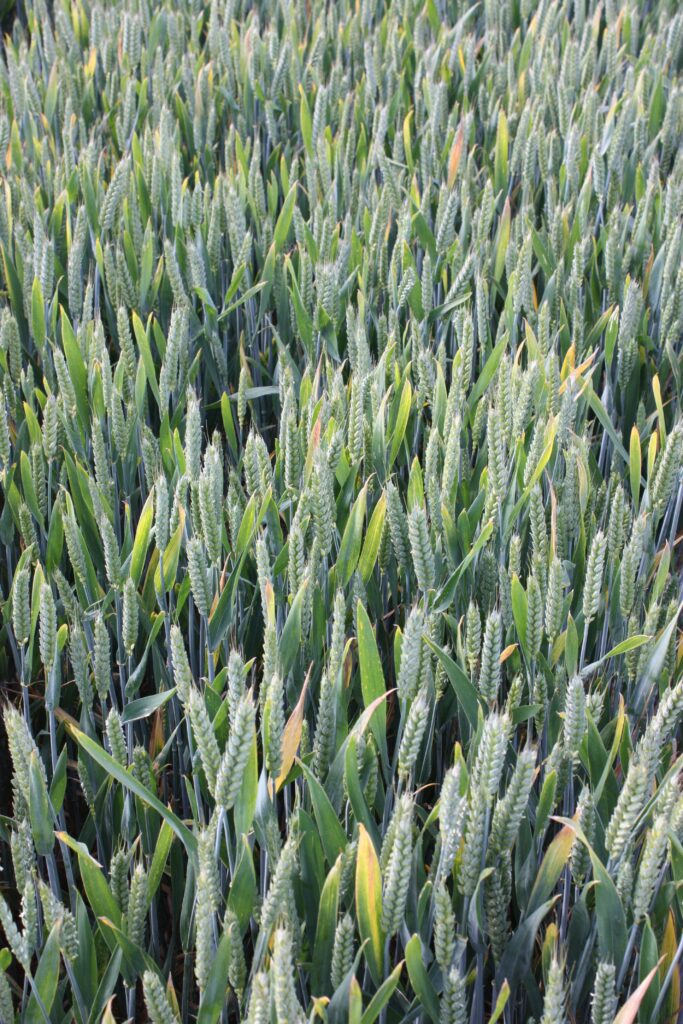
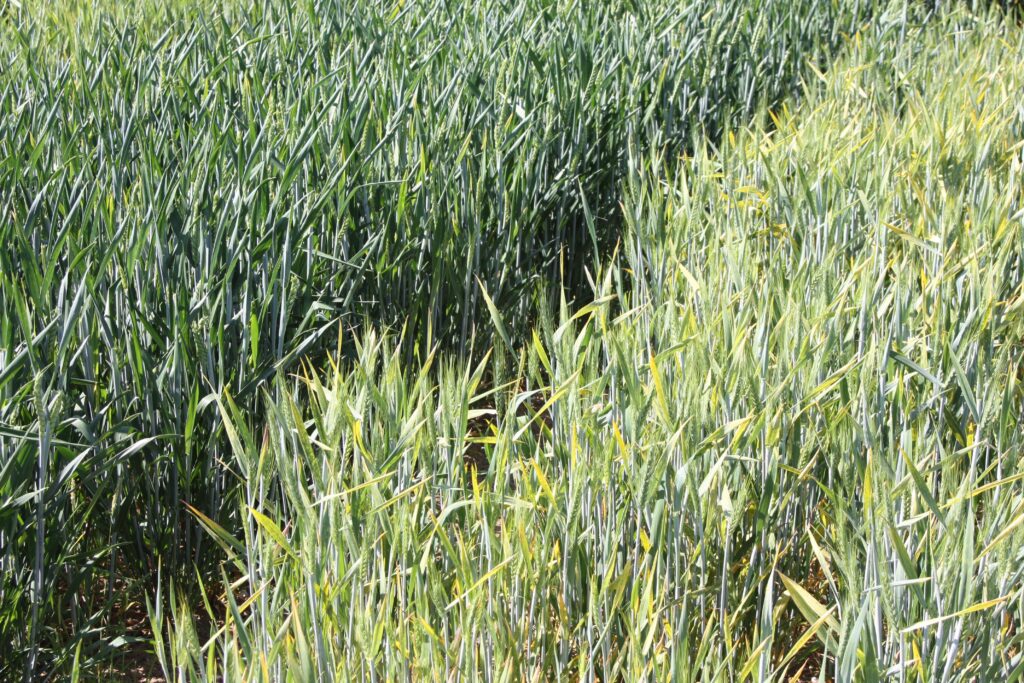
The robust disease package should bring more flexibility with fungicide inputs, Andrew suggests. “Don’t automatically assume reductions because we know that even with high ratings that doesn’t mean a variety won’t get a particular disease.
“But these traits do bring more flexibility around timing, and when the season dictates, potentially reductions in fungicides.”
The other thing that has been evident with Goldfinch in trials is its performance consistency, he says. “We’ve had three very different seasons in terms of weather, and it’s come through them all very well.”
He also believes that yield performance can be improved. “Some of the work we are doing with the variety is around crop nutrition, and where we’ve supplemented nitrogen with additional sulphur, magnesium and potassium we have seen above average yields from Goldfinch.
“I think that’s down to its root structure,” he says. “It’s a slower developing variety in the autumn than some, which means it can be drilled earlier, giving more time to develop its root system to accumulate the nutrition.”
